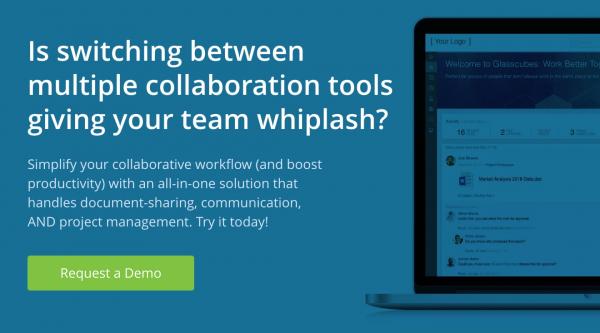Workplace Efficiency: 7 Key Tips On Improvement (& Measurement Guidance)
on 11 February 2021
As technology evolves, so does the concept of workplace efficiency. More and more robust digital tools have created new ways of working and significantly increased productivity levels.
In this technologically advanced world, how can organisations properly measure and improve efficiency in the workplace? We help answer that question below.
Workplace Efficiency: Benefits, Measuring, & Improving
Benefits Of Efficiency In The Workplace
Why is efficiency important in the workplace? Here are a few benefits your organisation can achieve by emphasizing it:
- Organisational growth. When you can do more with less, you have the opportunity to scale your operations.
- Reduced costs. This could be in the form of lower overhead, less costly processes, and fewer resources needed, among other cost factors.
- Fewer errors. More efficient employees and processes correlates with fewer errors and a higher quality product or service.
Improving Efficiency In The Workplace
In some industries, the rise of remote teams has made it even more difficult to achieve high efficiency, but there are some strategies you can use—whether your team is at home or in the office—to optimize employee performance. Below are a few standout methods.
1. Communicate clearly and effectively.
Better communication between team members means less room for mistakes and rework. This also includes improving communication between managers and their reports—both on a daily basis and during key interactions like performance reviews. (Here’s some strategic guidance to prepare you for improving internal communication, along with a template for when you’re ready to take action.)
2. Train employees.
Whether it's during onboarding or after you’ve made process or system changes, ensure your employees are trained accordingly and that training aligns with your business objectives. Keep in mind that the level of training should reflect the knowledge and actions required of the subject matter. For example, training new employees on how to log into their new workstation will take much less time and effort than training them on how to use your bespoke ERP system.
3. Reward employees.
Incentives are important for motivating employees to get work done faster and/or better. Rewards also help employees feel valued, which will increase engagement and show in their work. “The rewards don’t necessarily have to be big. A free lunch or a random day of PTO can make all the difference,” says Chris Smith of I Am Net Worthy.
4. Implement performance improvement plans (PIPs).
Joseph Puglise, senior director of recruiting & executive search at JMJ Phillip Group, recommends PIPs for improving efficiency in the workplace. He says they go a long way in motivating employees and enhancing their productivity. A PIP can be as simple as formal or informal as you see fit.
For example, you may have a PIP that runs for several months, complete with regular meetings, check-ins, and documentation recording comparisons of specific KPIs. In contrast, a PIP may consist of a simple meeting discussing performance issues and a follow-up email on how the employee has addressed those issues. “At my company, we use weekly PIPs to course correct and ensure employees are reaching their full productivity potential,” Puglise explains.
Keep employees on track and in the know with Glasscubes’ efficient project management and collaboration features. Request a guided demo of Glasscubes today.
5. Be sure employees fully understand the why and how behind business processes.
Puglise notes that you may see a dip in efficiency when putting a new process in place. This is because some employees may not grasp why they’re supposed to be doing things a certain way, which may inspire them to employ workarounds that ultimately cause more work on themselves or coworkers. “Avoid this by clearly explaining both the how and why elements of the process. Be sure to get their buy-in so they’re committed to contributing in the expected manner.”
6. Designate a rest area in the workplace.
“It may seem contradictory, but allowing employees to rest or otherwise disconnect from their job responsibilities throughout the workday can benefit workplace efficiency,” says Nate Masterson, business consultant and certified health expert.
Masterson notes that having a place where employees can unplug in a relaxing area and perform other activities can help them return to their work duties refreshed. “This can help them approach their work with more energy and a fresh eye. They’ll likely find they make less mistakes and discover new, more efficient ways to get results. You’ll get the same number of labor hours, but the quality of those hours will be higher.”
7. Ensure the workplace is conducive to employee health and productivity.
Allan Lopes of Healthy Building Certificate calls attention to the relationship between a healthy environment and productivity. He explains that even small environmental changes can positively impact employee efficiency, including changing filters in the A/C, switching to non-toxic cleaning products, adding indoor plants, providing natural light on workspaces, and checking water quality. “Research indicates changes like these can decrease the chance of workers getting sick, raise energy levels, and improve creativity.”
Measuring Efficiency In The Workplace
Before implementing any efficiency-boosting strategy, measure the current rate of efficiency in your workplace by doing the following:
- Track the number of tasks completed within a specific time frame. This works well with repeatable tasks that employees complete regularly. “For example, it could be the number of invoices processed per accounts payable worker every month,” explains Faith Kubicki of IntelliChief.
- Evaluate the frequency of your requests for updates. Trivinia Barber of Priority VA provides a more off-the-cuff approach to measuring efficiency. She considers how often she has to ask each team member for updates. “I don’t want to be a helicopter CEO, so the last thing I want to do is constantly follow up with my team members. If I have to light a fire under them, they probably aren’t a good fit.”
- Use project management software. In addition to her more informal approach, Barber also recommends using technology to help keep track of how workers are performing—namely in the form of a project management or task management tool. “Everyone knows what needs to be done, and each team member is personally accountable for their assigned tasks.”
Workplace efficiency has never been higher than with Glasscubes.
Glasscubes is your go-to collaboration platform for improving efficiency in the workplace. You can use our project management features to assign work and easily track its progress through to completion. Support your tracking efforts with seamless communication and file sharing. Create as many workspaces as you want, whether for different departments or projects. Our solution provides a true one-stop shop for efficiency and productivity.
With Glasscubes, you can:
- Store and share files in a secure location, complete with automatic version control. You can even create approval workflows and view clear audit trails of user actions.
- Assign and manage tasks for different members of the team, and track them to completion.
- Create customised workspaces for each project team in your portfolio. Team members can share resources and communicate with one another in their specific workspace, and you can access them all for easy oversight.
Get your workplace and employees in tip-top shape with Glasscubes. Check out a few case studies from other organisations that have seen great success with our solution.


